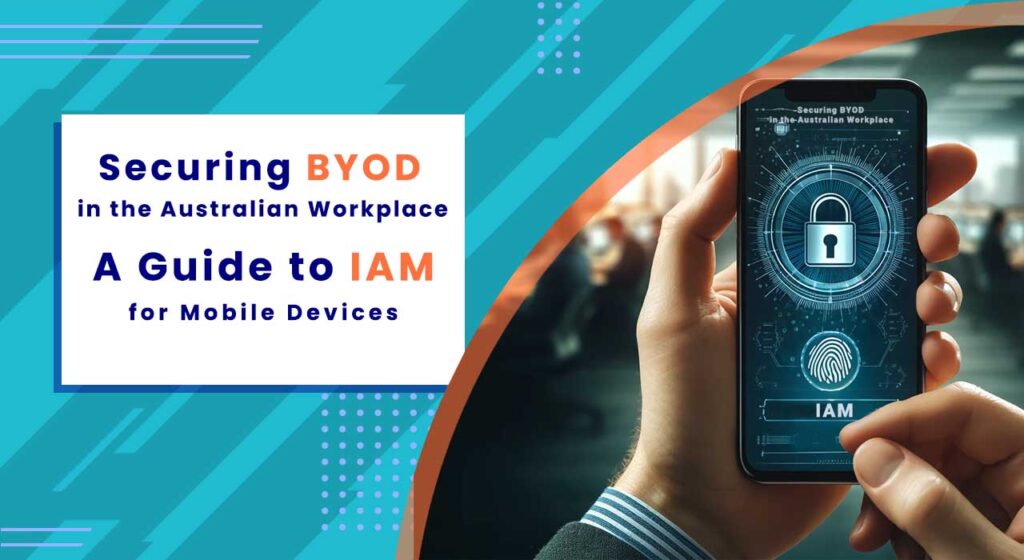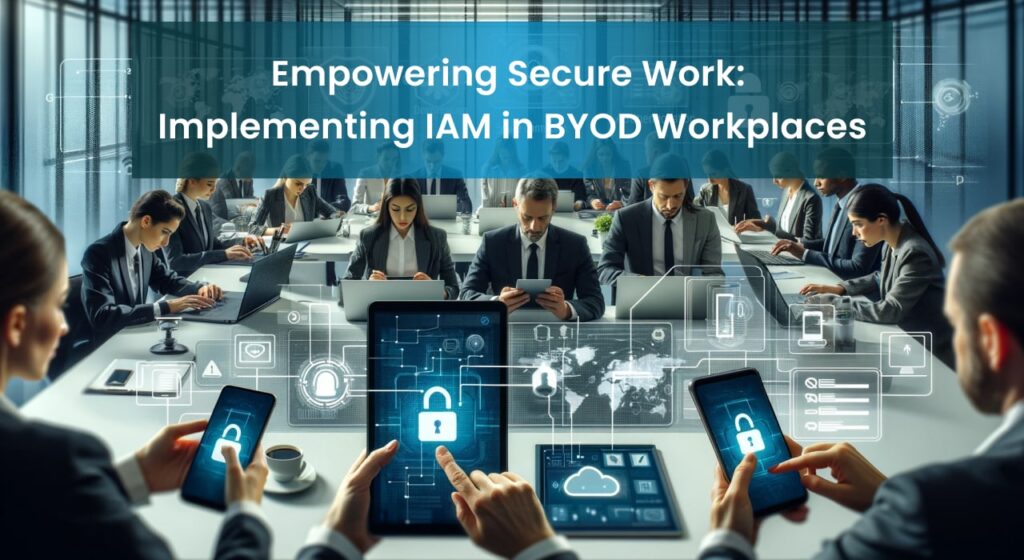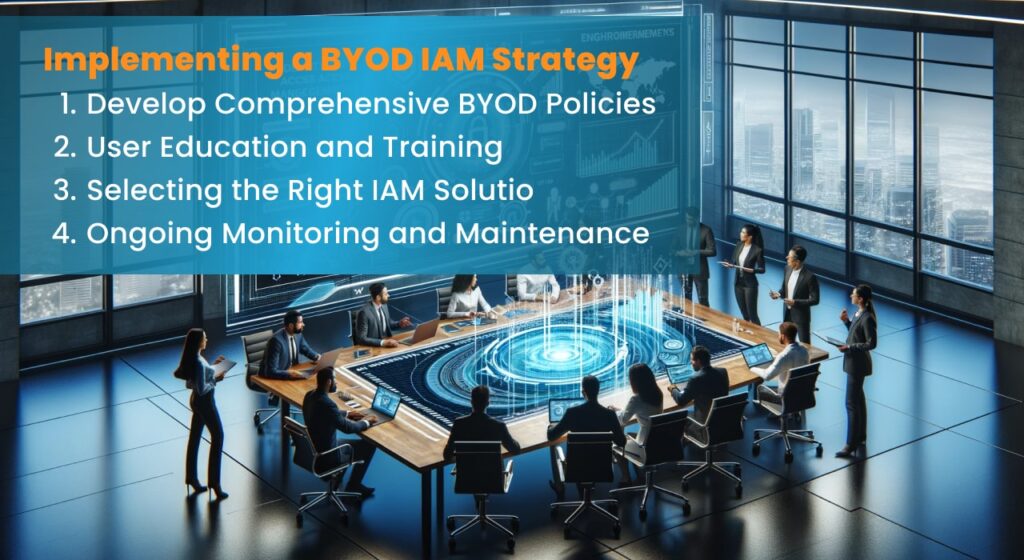
The Australian workplace landscape is undergoing a significant shift with the growing adoption of Bring Your Own Device (BYOD) policies. A 2023 study by the Australian Information Industry Association (AIIA) revealed that a staggering 82% of Australian organizations now permit some form of BYOD, empowering employees to utilise their personal smartphones, tablets, and laptops for work purposes. This trend offers undeniable benefits in terms of flexibility and productivity. However, it also introduces a new layer of complexity – securing sensitive corporate data on a multitude of devices outside the traditional IT infrastructure.
Recent headlines illustrate the potential severity of BYOD security breaches. In 2022, a major Australian healthcare provider suffered a data leak after an employee’s unencrypted work laptop containing patient information was stolen. This incident serves as a stark reminder of the vulnerabilities inherent in BYOD environments.
To address these challenges and ensure a secure BYOD ecosystem, Australian organizations are increasingly turning to Identity and Access Management (IAM) solutions specifically designed for mobile devices. IAM offers a comprehensive framework for safeguarding data by controlling user access and device functionalities, ultimately fostering a secure and productive BYOD environment.
BYOD Security Concerns in Australia

The burgeoning popularity of BYOD in Australian workplaces is undeniable. According to the Australian Bureau of Statistics’ (ABS) 2021 Information and Communication Technology (ICT) Usage in Australian Businesses survey, a significant 78% of businesses with more than 20 employees permit some form of BYOD. While this trend fosters flexibility and employee satisfaction, it also introduces a multitude of security concerns that organizations must address. (https://www.abs.gov.au/)
Data breaches are a prominent threat in BYOD environments. Unfortunately, Australia has witnessed its share of such incidents. In 2020, a major telecommunications company experienced a data breach where sensitive customer information was accessed after an employee’s personal device, compromised by malware, was used for work purposes. This incident highlights the vulnerability of corporate data residing on unmanaged devices susceptible to malware infiltration.
Beyond malware, unsecured Wi-Fi access poses another significant risk. When employees connect to public Wi-Fi networks using their work devices, data transmissions can be intercepted, potentially exposing sensitive information. Additionally, the potential for device loss or theft is ever-present. Lost or stolen devices containing unencrypted work data can lead to devastating breaches, as seen in the aforementioned healthcare provider data leak.
The Australian regulatory landscape surrounding BYOD security is multifaceted. The Privacy Act 1988 mandates that organizations take reasonable steps to protect personal information they hold. This extends to data accessed or stored on employee devices used for work purposes. Furthermore, industry standards like the Australian Signals Directorate’s (ASD) Strategies for Managing Information Security (ISM) framework provide guidance on implementing appropriate security controls in BYOD environments. By adhering to these regulations and standards, organizations can mitigate security risks and ensure compliance.
IAM for Mobile Devices in BYOD Environments

Identity and Access Management (IAM) serves as a critical line of defence in securing BYOD environments within Australian workplaces. At its core, IAM is a framework of policies, processes, and technologies designed to manage user identities and control access to organizational resources. By implementing a robust IAM strategy, Australian organizations can ensure that only authorized users possess access to sensitive data on their personal devices.
There are several key functionalities within IAM that contribute to a secure BYOD ecosystem:
- User Authentication and Authorization: IAM establishes a secure method for verifying user identities when attempting to access corporate resources on their BYOD devices. This typically involves username and password combinations, but IAM can integrate with multi-factor authentication (MFA) for an additional layer of security. Authorization then determines the specific level of access each user has to applications and data based on their job role and permissions.
- Multi-Factor Authentication (MFA): MFA adds a crucial layer of security beyond traditional passwords. MFA requires users to provide a secondary verification factor, such as a one-time code sent via SMS or generated by an authentication app, to access work resources. This significantly reduces the risk of unauthorized access even if a user’s password is compromised.
- Mobile Device Management (MDM): MDM solutions provide centralized management of mobile devices used for work purposes within an organization. MDM allows IT administrators to configure security settings, enforce password policies, remotely wipe lost or stolen devices, and distribute corporate applications securely. This ensures consistency in security protocols across various BYOD devices.
- Application Management: IAM can integrate with application management solutions to control access to corporate applications on BYOD devices. This enables organizations to restrict access to sensitive applications based on user roles and enforce data encryption within the applications themselves. Additionally, application management can facilitate the rollout of security patches and updates to ensure all work applications remain protected.
- Data Encryption: Data encryption is a fundamental security measure in BYOD environments. IAM solutions can integrate with data encryption tools to render sensitive data unreadable on a lost or stolen device. Even if an unauthorized individual gains access to the device, the encrypted data remains inaccessible, significantly mitigating the risk of a data breach.
Key IAM Functionalities and Benefits for BYOD Security
| Functionality | Benefit |
|---|---|
| User Authentication & Authorization | Ensures only authorized users access corporate resources. |
| Multi-Factor Authentication (MFA) | Adds an extra layer of security to prevent unauthorized access. |
| Mobile Device Management (MDM) | Provides centralized control and security configuration for BYOD devices. |
| Application Management | Controls access to corporate applications and enforces data encryption. |
| Data Encryption | Renders sensitive data unreadable on lost or stolen devices. |
By implementing these core IAM functionalities, Australian organizations can create a secure and controlled BYOD environment. This empowers employees with the flexibility of using their personal devices for work while ensuring the confidentiality, integrity and availability of sensitive corporate data.
As we explore the nuances of IAM for BYOD in Australian workplaces, further insights can be found in our detailed case study, which examines the common IAM challenges solved by Packetlabs across Australia. This case study showcases practical examples of overcoming these challenges and the benefits of robust IAM practices. To learn more about how Packetlabs is enhancing cybersecurity for Australian organizations, read our blog post: [Case Study in Action: Exploring Common IAM Challenges Solved by Packetlabs Across Australia].
Implementing a BYOD IAM Strategy

Successfully securing a BYOD environment in Australian workplaces necessitates a well-defined IAM strategy. Here’s a step-by-step approach to guide organizations through this process:
- Develop Comprehensive BYOD Policies: The foundation of a secure BYOD ecosystem lies in establishing clear and concise BYOD policies. These policies should outline acceptable device types, security protocols, data usage guidelines, and the consequences of non-compliance. Australian organizations should ensure their BYOD policies align with relevant data privacy regulations, such as the Privacy Act 1988.
- User Education and Training: Equipping employees with the knowledge and skills to navigate the BYOD environment securely is paramount. Organizations should conduct training sessions to educate users on BYOD policies, best practices for securing their devices, and the importance of reporting suspicious activity.
- Selecting the Right IAM Solution: Choosing an IAM solution that caters to the specific needs of the organization is crucial. Factors to consider include the number of BYOD devices, the types of devices supported, the desired level of security, and budget constraints. Australian organizations should evaluate various IAM solutions available in the market and select one that integrates seamlessly with existing IT infrastructure.
- Ongoing Monitoring and Maintenance: A secure BYOD environment requires constant vigilance. Organizations should implement processes for ongoing monitoring of BYOD devices for suspicious activity or malware infections. Additionally, regular security audits and updates to IAM policies and configurations are essential to maintain a robust level of security.
By following these steps and addressing the key considerations, Australian organizations can establish a successful BYOD IAM strategy. This empowers employees with the flexibility of BYOD while ensuring the confidentiality, integrity, and availability of sensitive corporate data.
Case Study: A Successful BYOD IAM Implementation in Australia
In 2022, Melbourne-based fintech company FinTech Solutions implemented a comprehensive BYOD IAM strategy that demonstrably enhanced their data security posture. The organization, with over 500 employees, witnessed a significant increase in BYOD adoption, prompting the need for a robust solution.
FinTech Solutions’ success hinged on several key factors. Firstly, they developed a user-friendly BYOD policy that clearly outlined device security protocols and employee responsibilities. Secondly, they invested in a cloud-based IAM platform that offered multi-factor authentication, mobile device management (MDM), and application management capabilities. This centralized system facilitated the secure onboarding of BYOD devices and ensured consistent security configurations across all platforms. Finally, FinTech Solutions prioritized user education, conducting regular training sessions to equip employees with the knowledge to safeguard sensitive data on their personal devices.
Through this multi-pronged approach, FinTech Solutions achieved a significant reduction in security incidents involving BYOD devices. Their success story exemplifies the critical role a well-defined BYOD IAM strategy plays in fostering a secure and productive BYOD environment in Australian organizations. Furthermore, FinTech Solutions reported a noticeable increase in employee productivity following the BYOD IAM implementation. Employees enjoyed the flexibility of using their preferred devices, leading to higher satisfaction and improved morale.
The burgeoning popularity of BYOD in Australian workplaces presents both opportunities and challenges. While BYOD fosters flexibility and employee satisfaction, it introduces security vulnerabilities that organizations must address. Data breaches, malware infiltration, and unauthorized access can have devastating consequences for sensitive corporate information.
Implementing a robust IAM strategy equipped with functionalities like user authentication, multi-factor authentication, and mobile device management serves as a powerful defence mechanism. By establishing clear BYOD policies, providing user education, and selecting the right IAM solution, Australian organizations can create a secure BYOD ecosystem. This empowers employees with the flexibility of using their personal devices while ensuring the confidentiality, integrity, and availability of sensitive corporate data.
Looking ahead, the BYOD landscape is likely to evolve further. The emergence of new technologies and evolving regulatory frameworks necessitate ongoing adaptation. Australian organizations must remain vigilant, continuously evaluating their IAM strategies and adapting them to address future security challenges. By prioritizing BYOD security and embracing a proactive approach to IAM, Australian organizations can reap the benefits of BYOD while mitigating associated risks.
To ensure a successful BYOD IAM implementation, organizations are strongly encouraged to consult with IT security professionals. These specialists possess the expertise to assess your organization’s specific needs, recommend appropriate IAM solutions, and guide you through the implementation process. By partnering with IT security professionals, Australian organizations can navigate the complexities of BYOD security and create a secure and productive work environment for the digital age.
